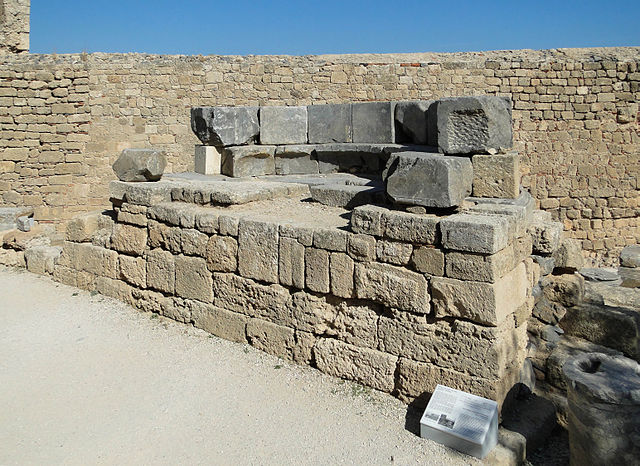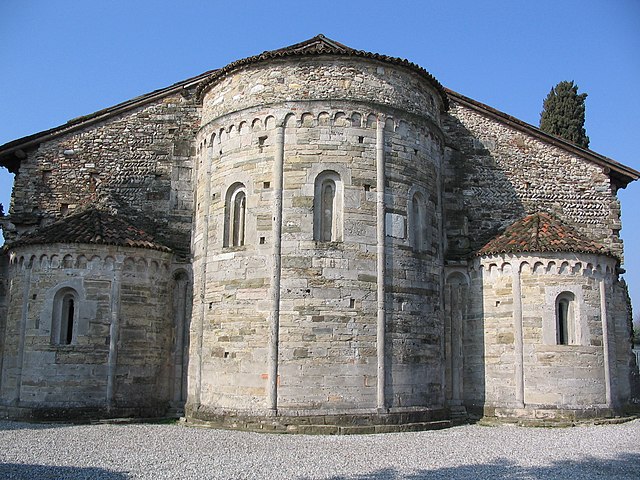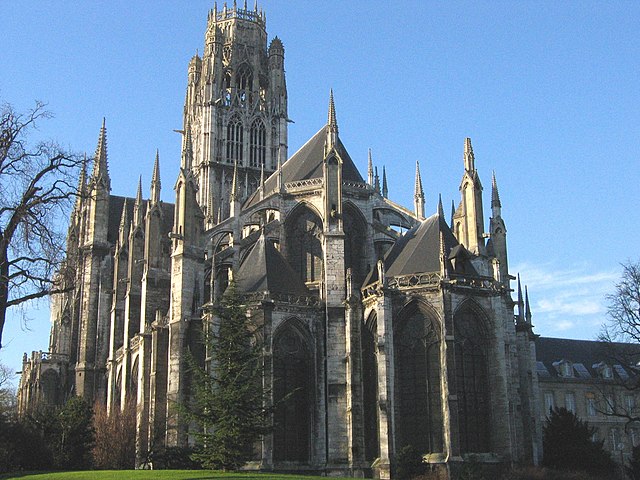An exedra is a semicircular architectural recess or platform, sometimes crowned by a semi-dome, and either set into a building's façade or free-standing. The original Greek sense was applied to a room that opened onto a stoa, ringed with curved high-backed stone benches, a suitable place for conversation. An exedra may also be expressed by a curved break in a colonnade, perhaps with a semicircular seat.
Exedra of Pamphilidas, Acropolis of Lindos, Rhodes, Greece
The foundations and partial floor of a late Roman villa. The floored part is the exedra. The rest of the floor has deteriorated and is missing, with only parts of the hypocaust columns remaining. Hot air circulated through the hypocaust to heat the house.
Exedra of the Belvedere Court, at the Vatican Palace in Rome
Open-air exedra with bench – the Abraham Lincoln: The Head of State monument in Grant Park, Chicago
In architecture, an apse is a semicircular recess covered with a hemispherical vault or semi-dome, also known as an exedra. In Byzantine, Romanesque, and Gothic Christian church architecture, the term is applied to a semi-circular or polygonal termination of the main building at the liturgical east end, regardless of the shape of the roof, which may be flat, sloping, domed, or hemispherical. Smaller apses are found elsewhere, especially in shrines.
Typical early Christian Byzantine apse with a hemispherical semi-dome in the Basilica of Sant'Apollinare in Classe
Triple apse of Basilica di Santa Giulia, northern Italy
East end of the abbey church of Saint-Ouen, showing the chevet, Rouen, Seine-Maritime, France
A chevet apse vault, Toulouse, France








